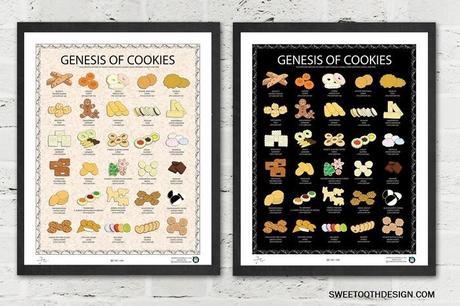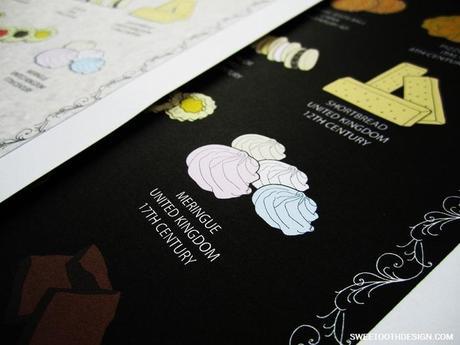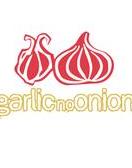In the United States and Canada a cookie is a small, flat, baked treat, usually containing flour, eggs, sugar, and either butter or cooking oil, and often including ingredients such as raisins, oats, or chocolate chips. Cookies are most commonly baked until crisp or just long enough that they remain soft, but some kinds of cookies are not baked at all. Cookies are made in a wide variety of styles, using an array of ingredients including sugars, spices, chocolate, butter, peanut butter, nuts, or dried fruits. The softness of the cookie may depend on how long it is baked.
Cookie-like hard wafers have existed for as long as baking is documented, in part because they deal with travel very well, but they were usually not sweet enough to be considered cookies by modern standards.[4]
Cookies appear to have their origins in 7th century AD Persia, shortly after the use of sugar became relatively common in the region. They spread to Europe through the Muslim conquest of Spain. By the 14th century, they were common in all levels of society throughout Europe, from royal cuisine to street vendors.
SweeTooth Design is a place that collects creative recipes around the world. They also researcher writing about history and fun facts about desserts and foodie.

Out of curiosity SweeTooth Design went onto research and collect documented history for cookies. The finding contains long lists and details of cookies, which many people may not have the time to read. Eventually they found a simpler way to bring food knowledge and history by designing the first cookie history poster, “GENESIS of COOKIES.”

There are 30 cookies on the posters, and each is indicated with its documented origin of place and time. They are based on research that can be found on their website.
- There are two backgrounds to choose from: LIGHT and DARK
- Poster size is 16″x20″
- Limited 500 prints
- It is signed and numbered
- Printed with water-based ink onto 100% recycled 100 lb. cardboard paper.

